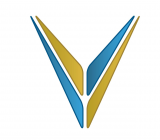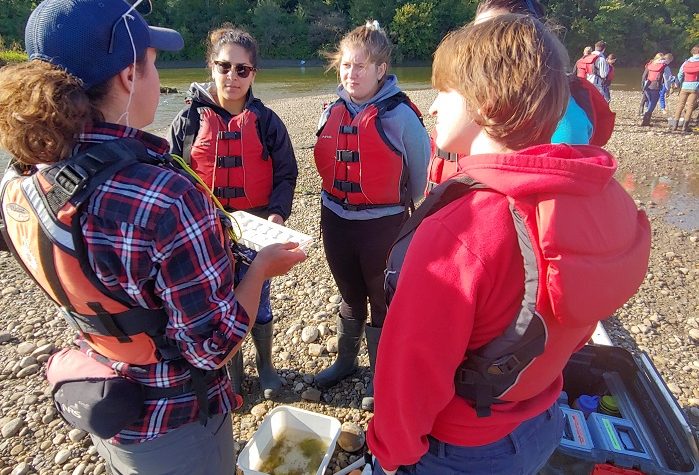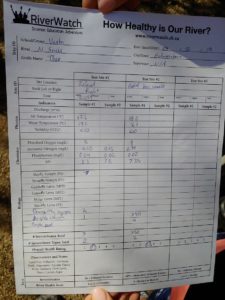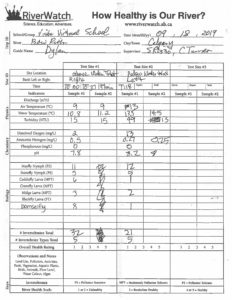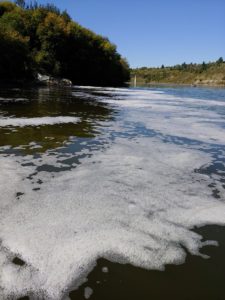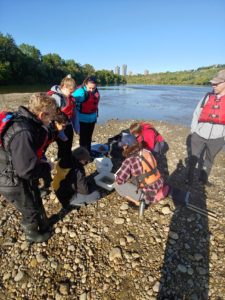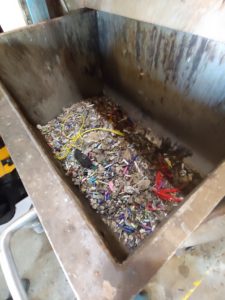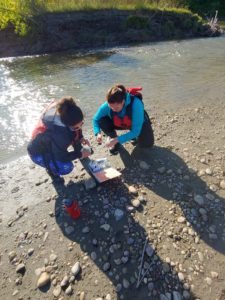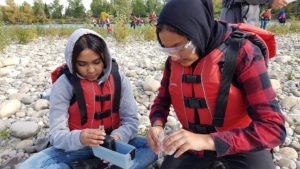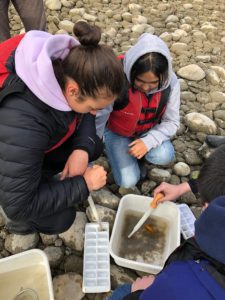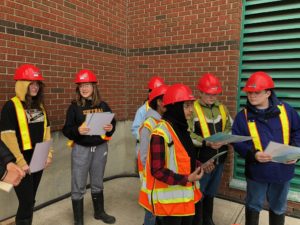RiverWatch Promotes Healthy Water and Treatment Practices
On September 10 in Edmonton and September 18 in Calgary, Vista Virtual School (VVS) students put on their life jackets and rubber boots, and embarked in rafts to paddle along the North Saskatchewan and Bow rivers, testing water quality and river health with RiverWatch Alberta.
“I liked seeing how EPCOR cleaned the river to make it much cleaner,” said VVS grade 8 student William B-L. “We did tests…and I realized ‘it works!’”
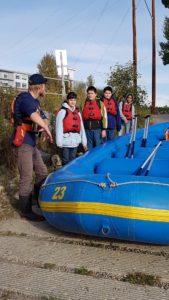
Getting on the river and using scientific experiments to test the water helped students learn the rivers in our two major cities are healthy, even as you can see rubber tires from the landfill—embedded in the banks from over 100 years ago—and other deposited items on the river banks.
Put on by RiverWatch Alberta, students from across the province are given the opportunity to conduct experiments and learn more about the ecosystems surrounding the major rivers that flow across Alberta.
“The program met a large range of curricular outcomes from grades 8 up to 12,” said Christina Turner, a science teacher with VVS. “Each student was able to relate to different activities, and expand their understanding of the concepts in their courses.”
“‘Water Systems’ is one of the core units in grade 8 science,” said VVS junior high teacher Bryan Frechette. “Students learn that it is important to maintain clean and safe water sources for humans and the other living things that our survival depends upon. They also learn about how we can manage and protect our water.”
It was a good way for junior high and senior high students to understand the ecosystem and impacts a river has on the community—or in some cases, the impact the community has on the river.
“The content directly relates to Biology 20 curriculum,” said VVS high school science teacher, Shelley Rizzo. “We discuss different ecosystems, biodiversity in ecosystems, human impacts on ecosystems, and water quality that affects different ecosystems and organisms in our course and that is the focus of this RiverWatch activity.”
It also relates well to chemistry curriculum.
“The hands-on tests done of the river water were very technical and based in Chemistry 20/30 knowledge. The pH test, level of dissolved oxygen in the water, nitrates/phosphate tests are all related to chemistry,” said VVS science teacher, Simran Bhatia. “Getting to do hands-on experiments is an important part of the Chemistry 20/30 curricula. It is also valuable in giving students a new perspective on how the things we throw down our drains impacts the environment around us. A great day to meet other VVS students, too!”
Included in the trip was a visit to the water treatment plants in each city, learning how cutting-edge Alberta’s wastewater treatment and removal programs are; it gave everyone the opportunity to see ways to limit the amount, and types, of waste that flow into our rivers.
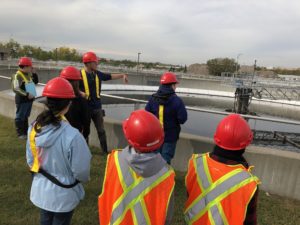 “Being able to interact with the test kits to do water studies and see how a water treatment plant works first hand (smells and all!),” said Rizzo. “All make a greater impact on the students than just seeing it on the whiteboard or in a video. All your senses are involved in this learning, not just your brain.”
“Being able to interact with the test kits to do water studies and see how a water treatment plant works first hand (smells and all!),” said Rizzo. “All make a greater impact on the students than just seeing it on the whiteboard or in a video. All your senses are involved in this learning, not just your brain.”
It was a hands-on learning approach—or is that paddle-on? As students had to travel by boat, paddling their way to testing sites on the river.
“I really enjoyed the paddling as it gave me a lot of time to think about my life,” said VVS grade 10 student Jeremy P. “It [the experiments and learning] really helps me with science, as I can really relate to what I learned last year and when I am taking science next semester.”
Students were even able to pair together and make connections with other students throughout the day. Which was very beneficial, as one of the challenges in a distance learning environment is interacting socially with your peers, and activities such as this one are great opportunities to stay engaged in your classes and with classmates.
“Seeing students connect with each other after just meeting can be so rewarding for everyone involved,” said Rizzo.
It was an interactive way to learn concepts and strategies.
“Students were able to apply laboratory knowledge outside, collecting water samples and measuring pH, nitrates, and phosphates (among other observations),” said Turner. “We discussed how chemicals end up in waterways, and why these are difficult to remove. We also talked about titration analysis, and some of the careers in chemical engineering fields related to water analysis.”
Concepts that are sometimes harder to learn in the classroom were translated to live testing.
“Just being out of the classroom to ‘learn school content’ is so worthwhile for everyone,” said Rizzo. “You can relate on several different levels with the learning, whereas, a school classroom is just ‘pen and paper’ learning for the most part.”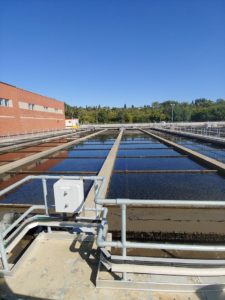
It let students experience first-hand what they need to do to test river quality, as well as seeing what technology is needed to ensure water is safe for consumption and quality for people using the rivers.
“The tour of the Edmonton Waste Water Treatment Plant was eye-opening and super informative,” said Bhatia. “Any student living near the North Saskatchewan River should take part in this field trip!”
It was even relaxing for the students, as a way to learn scientific concepts and water protection, while enduring some exercise and fresh air.
Experimenting on the banks of the river definitely helped students understand why testing is needed, and what they can do to limit harmful chemicals and items from reaching the river.
“I enjoyed going on the water the best,” said VVS grade 9 student Reese B. “This helps me with my studies because it teaches me about the ecosystem around me.”
